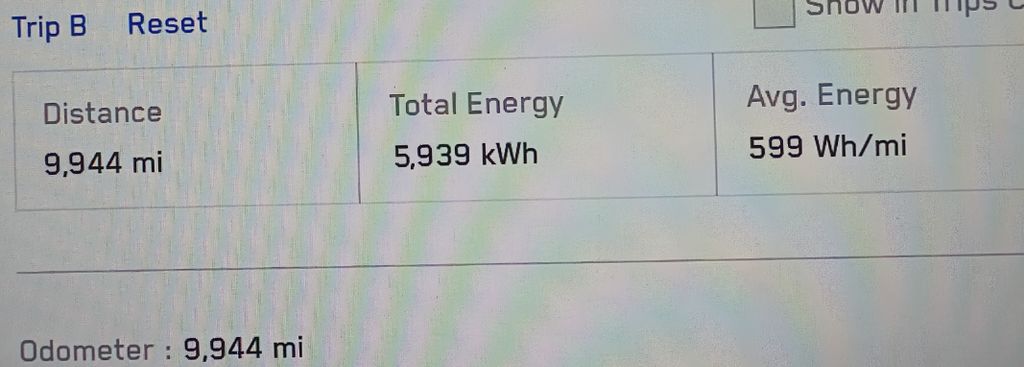The Tesla Cybertruck has always been and will probably continue to be a divisive vehicle for many years. From the day it was unveiled in prototype form back in 2019, people either hated or loved it.
Now that the electric pickup is getting into the hands of more and more customers, we get a chance to see what the car is like to actually live with and not just go by the hype that surrounds the angular truck.
Get Fully Charged
Range questions persist about the Cybertruck
The long-awaited Tesla Cybertruck has received criticism for being much more expensive, and not having as much range, as originally announced in 2019. Now, real-world tests from actual owners keep revealing disappointing range. It’s a harsh outcome for a very important product for Tesla.
Thanks to a generous user on the Cybertruck Owners Club forum, we have the story of a Tesla Cybertruck that has already driven over 10,000 miles. Its two drivers shared everything from energy consumption to insurance costs and probably the most sensible of topics, range.
The vehicle in question is an all-wheel drive unit that had 72 miles on the odometer when it was delivered. On January 15, the odometer passed the 10,000-mile mark.
We’ll start with the range, as this seems to be the main talking point when considering the Cybertruck. When InsideEVs alum Kyle Conner from Out of Spec Motoring drove a dual-motor Cybertruck through the night to see how far the EV would go on a full charge, he got a total of 254 miles, 20% less than the advertised 320 miles (on all-terrain tires).
That test was done at a relatively constant speed of 70 miles per hour while the outside temperature was about 45 degrees.
The Cybertruck that passed 10,000 miles is doing even worse in terms of range, but there’s an explanation. The two drivers who are using the EV said that the maximum range with a full battery was 206 miles and 164 miles with an 80% state of charge.
55 Photos
One driver who put about 80% of the miles on the Cybertruck is quite aggressive, while the other one is more conservative, which means that the truck was driven fairly aggressively most of the time, but there were no speeding tickets or accidents during these first 10,000 miles. At the same time, they weren’t “babying the truck.”
About 70% of the miles were done on the highway, with the remaining 30% on city roads. A road trip that covered over 1,500 miles was also thrown into the mix.
The average energy consumption after 9,944 miles was 599 watt-hours/mile. When driving conservatively around town, the efficiency number on the screen went as low as 290 Wh/mi, while driving on the highway made the number jump to 900 Wh/mi occasionally.

Tesla Cybertruck efficiency numbers after almost 10,000 miles. Source: Cybertruck Owners Club
When it comes to charging, this particular Cybertruck was topped up at home about 60% of the time. Supercharging represented 30% of the charging sessions, and the remaining 10% came from destination charging.
The drivers say that charging at V2 Superchargers is very slow and that it can take up to two hours to replenish the battery, while the newer V3 stalls do a better job but charging to 70% still takes over an hour. The latest V4 chargers weren’t available to test.
When topping up at home, the car was set to stop charging at 90% most of the time to try to avoid having to supercharge at slow speeds and also maintain good battery health. With a Gen 3 Tesla wall connector, it takes anywhere between 8-14 hours to recharge at 32 or 48 amps, the forum post said.
There were some issues during these first 10,000 miles like the main screen blacking out while the battery state of charge was low and at an unknown level. The truck was towed to a Tesla service center which had it for 90 minutes.
The so-called vault that’s inside the bed isn’t waterproof as claimed, and there is quite a bit of road noise, according to the forum post. Initially, the truck came with a set of all-terrain tires and Aero Covers on the wheels but they were changed for a set of all-season tires after about 1,700 miles (the covers stayed on the car). After the tire swap, the drivers said they didn’t see a noticeable difference in the energy consumption.

Tesla Cybertruck under-bed storage (Source: @DimaZeniuk / X)
With all this being said, however, there are quite a few positives, the biggest of which is the “beyond great” sound system. The cooled seats, passenger visibility, handling characteristics, acceleration, speed, and steer-by-wire system were also appreciated. The fact that the truck gets a lot of attention, including from people who want to touch the pickup and take photos, not so much.
Insurance costs $465 with clean driving records for both drivers minus some old tickets, but it’s worth noting that both users have a lot of miles under their belts.
All in all, the Cybertruck is “a dream to drive” but it has disappointing charge speeds and range, with about 164-210 miles averaged over 10,000 miles, according to the forum post. Overall, the value of the vehicle is ok, but there are still some production problems to work out.
So, there you have it. This is most likely the first high-mileage Cybertruck owner experience we have come across, and it’s pretty much in line with what we knew from previous real-world tests. But what do you think? Let us know in the comments below.
Read the full article here


